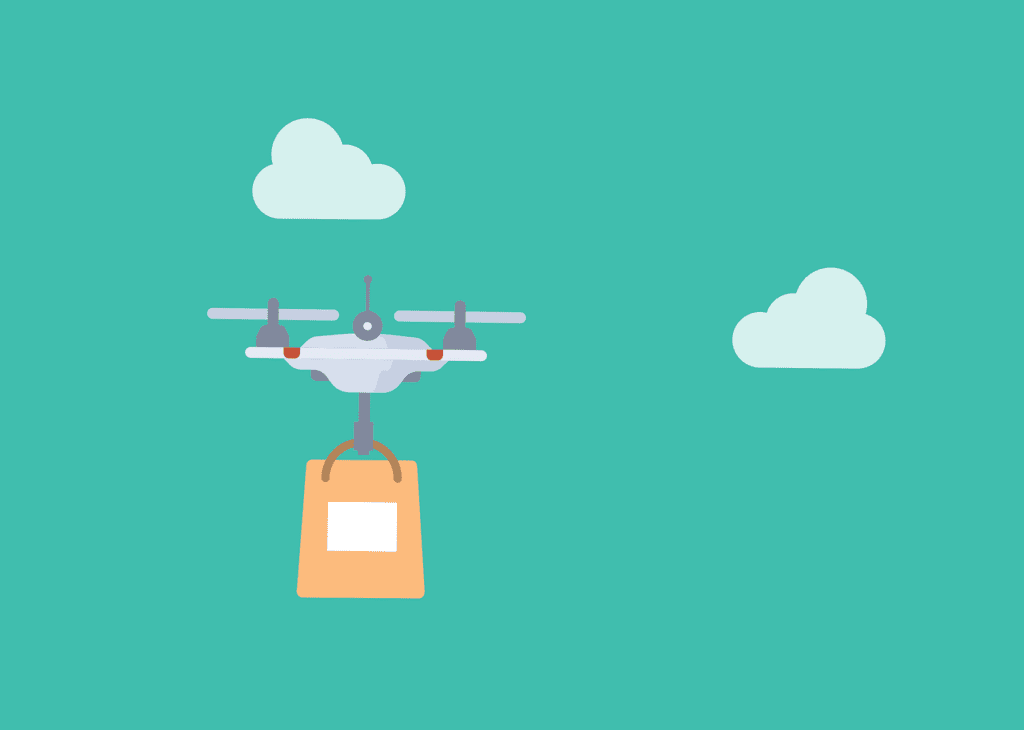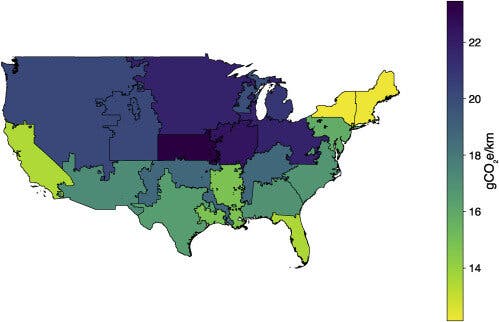
In the United States, as in many other countries, freight transportation accounts for nearly a third of all the greenhouse gas emissions emitted by the transportation industry at large. Some major companies like Amazon have been investing a lot of money into technology that may offset some of this environmental cost. This includes software that streamlines and optimizes a delivery truck’s route, investments into transitioning towards an electric fleet, considering the use of bicycles, and, last but not least, drones.
There are many things that make drones fantastic for last-mile delivery (i.e. from the nearest transportation hub to the consumer). They’re faster, more reliable, and cheaper than traditional delivery methods, especially since they can be entirely autonomous. Concerning their environmental impact, drones are light-years ahead of any other delivery method.
According to a new study out of Carnegie Mellon University, drones carrying small parcels emit 84% less greenhouse gas emissions than a diesel truck while also using 94% less energy.
Are drones the future of last-mile delivery?
Drone delivery is by no means common and it may take a while before you see swarms of quadcopters whizzing past suburban chimneys. But, as in other areas of life, such as remote work, drone deliveries saw a surge during the COVID-19 pandemic as people found the prospect of not interacting with a living creature while a deadly virus ran amok outside quite appealing.
Over the past three years, there have been over 660,000 commercial drone deliveries to customers, not including the countless test flights to develop and prove the technology. McKinsey estimates that more than 2,000 drone deliveries are carried out each day worldwide, with growth rates accelerating every week. The year 2022 could be closed with 1.5 million deliveries, says the market research company.
The rise in the popularity of drone deliveries prompted the researchers at Carnegie Mellon University to measure their energy consumption and greenhouse gas emissions. To this aim, they employed small quadcopter drones carrying packages weighing no more than half a kilogram to a single destination, such as the customer’s home.
The quadcopters were operated at varying distances and speeds ranging from 9 to 26 miles per hour. After the drones’ nearly 200 delivery flights were completed, the researchers calculated how much energy they used based on the flight logs, and later used that data to compute greenhouse emissions depending on how the electricity powering the batteries was sourced.

After comparing the energy consumption and emissions with other forms of transportation, the researchers concluded that drones are orders of magnitude more environmentally-friendly than diesel trucks and vans, and even electric vehicles. The only vehicle that consumed less energy per package than drones was the electric bike.
“We show the impact of the cruise speed and payload mass on the drone’s range, provide generalizable coefficients for others to estimate drone energy use, and show that the energy per package delivered by drones can be up to 94% lower than conventional transportation modes,” the researchers noted in their study appearing in the journal Patterns.

It may seem like the future of last-mile home delivery belongs to drones, but while they are vastly more environmentally friendly than most other options, drones have their own practical limitations. Drones can’t exactly open mailboxes and backyards tend to have obstacles and nosy dogs. Delivering only one package at a time isn’t the most efficient thing in the world either. In the future, however, these limitations could be overcome with smarter software and heftier, more powerful drones capable of carrying more load.
In any case, even today, it makes sense to use drones for some single package deliveries, helping to offset some of the energy and carbon emissions pegged to the industry.


